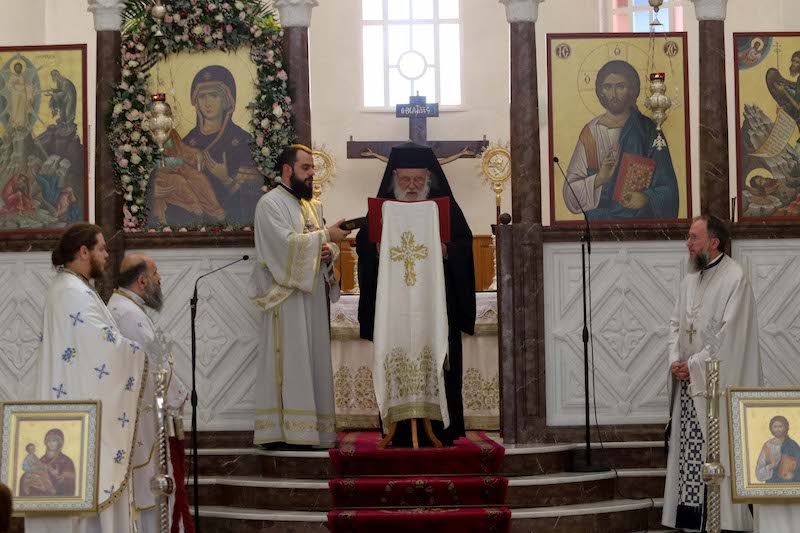Greek American Parochial Schools: Preserving Heritage and Faith

Dr. Anastasios Koularmanis, the Director of the Department of Greek Education, will soon be sharing a series of articles that center on Greek Education, with a particular emphasis on spotlighting several Day-Schools.
Greek parochial education in America has a long-standing tradition that dates back to the late 19th century. From the early days of Greek immigration, Greek-American communities recognized the importance of preserving their Greek Orthodox heritage and faith, leading to the establishment of Greek-language schools in collaboration with their parish churches. These schools have always aimed to instill the values and traditions of Greek Orthodoxy in young people, creating well-informed and responsible members of the Greek Orthodox Church.
The establishment of Greek schools in America gained momentum in the early 20th century, marking an important milestone in Greek-American education. In 1905, the Greek Institution of Chicago-Hellenism became the first Greek day school, offering elementary and secondary education. Subsequently, more Greek schools emerged in Chicago, providing bilingual English and Greek curricula or focusing exclusively on the Greek language. While many Greek-American children attended public schools, they also participated in afternoon and Saturday schools to deepen their knowledge of the Greek Orthodox faith, language, and culture.
Recognizing the need for centralized Greek education in the United States, Archbishop Athenagoras took a significant step by founding the Supreme Educational Council in 1931. This council aimed to establish standardized curricula, coordinate teaching staff, and create a uniform system of teaching across Greek schools. By 1935, there were 414 afternoon schools and five-day schools across America, catering to the growing Greek immigrant population.
In order to further enhance Greek education in the United States, specific goals were set to improve the system. These goals included developing a standardized curriculum, organizing a coordinated teaching staff, implementing a reward structure for teachers, expanding the number of Greek schools, and gathering statistics for evaluation. The efforts to strengthen Greek education received a boost with the passage of the Immigration and Naturalization Act of 1965, which facilitated the entry of a significant number of Greek immigrants to the country. Bilingual programs were established, allowing Greek-American children to learn the language within high school settings.
The Greek Orthodox Archdiocese has played a pivotal role in the establishment and development of Greek-American parochial schools. Under the leadership of Archbishop Iakovos, ambitious plans were implemented to enhance Greek education. These initiatives included the improvement of religious education programs, the establishment of Boy Scout programs, and the accreditation of the Hellenic College Holy Cross Greek Orthodox School of Theology.
One notable institution that underwent significant transformations under Archbishop Iakovos is Saint Basil Academy. Originally serving as a teachers’ training college for Greek language instruction, the academy expanded with financial support from various Greek-American organizations. It has since become a state-certified child residential center, serving as a prominent institution for Greek education in the United States.
The Greek Orthodox Archdiocese’s Office of Education has also played a crucial role in supporting Greek schools and programs. This office provides professional development opportunities, curriculum guidelines, and supplies for teachers. The Archdiocesan Department of Greek Education aims to impart the spiritual, moral, and cultural values of Greek Orthodoxy to young people while teaching the Modern Greek language, history, and culture.
Greek parochial day schools and afternoon schools continue to hold a vital position in Greek education in the United States. Approximately 350 parishes sustain afternoon Greek language schools or Saturday programs, serving an estimated 40,000 to 45,000 students. These schools adhere to local and state mandates and often offer nursery, preschool, kindergarten, elementary, and secondary programs. While the teaching of the Greek language, history, culture, and elements of the Greek Orthodox religion remains central, there is an increasing emphasis on nurturing students who take pride in their Greek heritage.
Greek-American parochial schools stand as a testament to the enduring commitment of the Greek community in America to preserve their heritage and faith. Through their educational institutions, they ensure that future generations continue to embrace the richness of Greek culture and the values of Greek Orthodoxy, maintaining a strong connection to their roots.
H αναδημοσίευση του παραπάνω άρθρου ή μέρους του επιτρέπεται μόνο αν αναφέρεται ως πηγή το ORTHODOXIANEWSAGENCY.GR με ενεργό σύνδεσμο στην εν λόγω καταχώρηση.
Ακολούθησε το ORTHODOXIANEWSAGENCY.gr στο Google News και μάθε πρώτος όλες τις ειδήσεις.


















